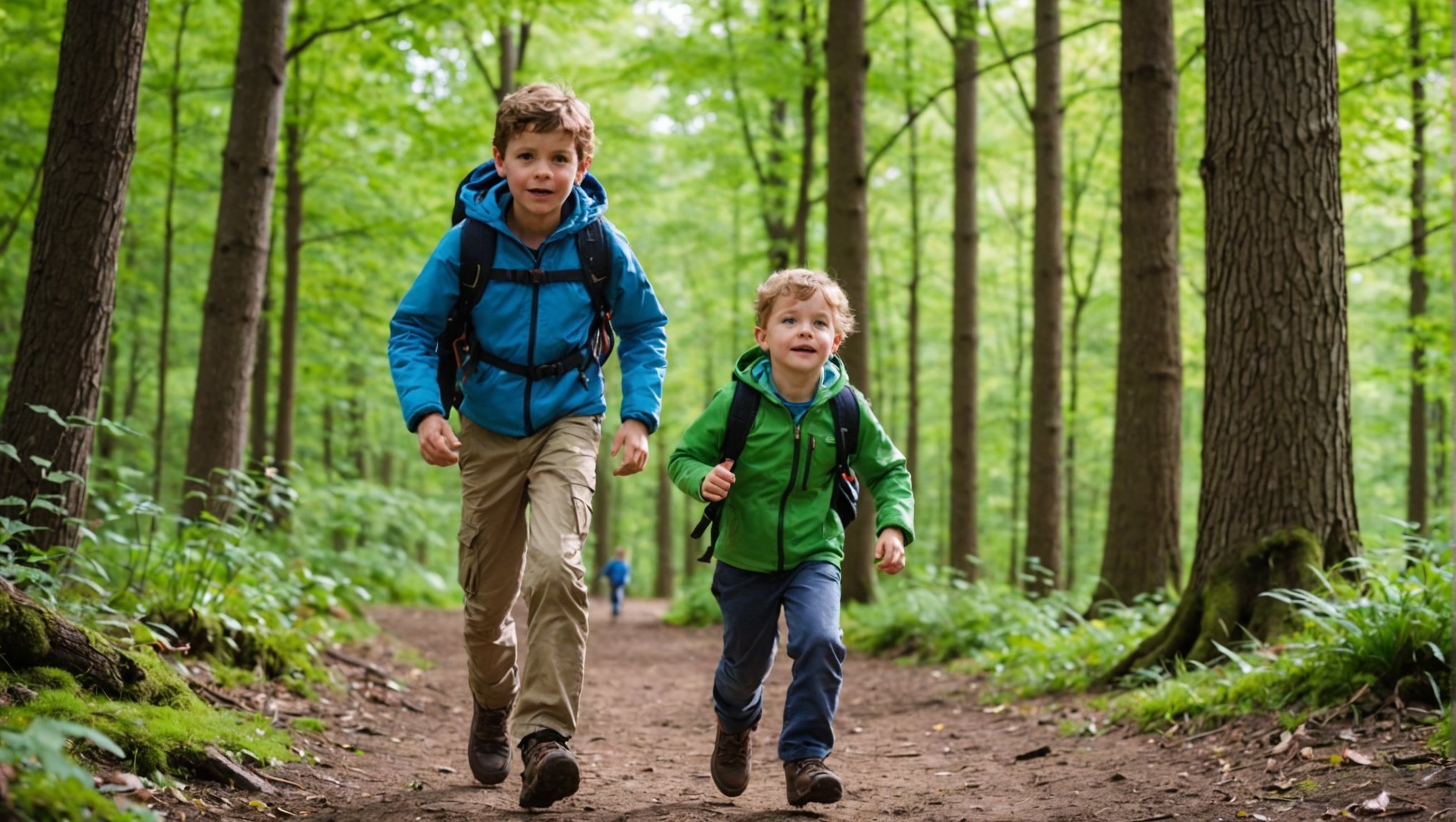Myopia is becoming a widespread concern among children, leading parents to seek effective prevention methods. Outdoor adventures not only provide fun and physical activity but might also play a significant role in slowing myopia progression. This exploration delves into the science behind the benefits of outdoor time, examining how exposure to natural light and varied distances can contribute to healthier vision. Join us as we uncover the potential impact of outdoor activities on children's eye health.
Understanding Myopia in Children
Myopia, commonly known as childhood nearsightedness, is a prevalent vision condition where distant objects appear blurry. It occurs when the eyeball is too long or the cornea is too curved, causing light rays to focus in front of the retina. This condition is increasingly common, affecting a significant number of children worldwide. Early detection is crucial for maintaining optimal vision health.
Topic to read : The ultimate guide to choosing orthopedic socks for comfort
Childhood nearsightedness can progress rapidly, making regular eye examinations essential. Detecting myopia early allows for timely intervention, which might include prescription glasses or contact lenses to correct vision. In some cases, specialised treatments like orthokeratology or atropine eye drops may be recommended to slow the progression.
The long-term implications of untreated myopia can be severe. Without proper management, children with myopia face an increased risk of developing serious eye conditions later in life, such as glaucoma, cataracts, or retinal detachment. Ensuring early and effective management of myopia is vital for safeguarding a child's vision health and overall quality of life. Parents should be vigilant about their child's vision and seek professional advice if they notice signs of nearsightedness, such as squinting or difficulty seeing distant objects.
Have you seen this : Exploring the Impact of Mindfulness Techniques on Alleviating Burnout Among Healthcare Workers
The Scientific Connection Between Outdoor Activities and Myopia
Understanding the link between outdoor activities and myopia progression is crucial for parents and caregivers. Research consistently shows that increased time spent outdoors can help slow the progression of myopia in children. This connection is supported by various scientific studies, which highlight the benefits of natural light exposure.
Key Research Findings
Studies indicate that children who engage in more outdoor activities tend to have a lower risk of developing myopia. The exact reasons are still being explored, but exposure to natural light is believed to play a significant role. One hypothesis suggests that natural light stimulates the release of dopamine in the retina, which may help regulate eye growth and prevent elongation of the eyeball—a key factor in myopia progression.
Biological Mechanisms
The biological impact of natural light on eye health is a fascinating area of study. Unlike artificial indoor lighting, natural sunlight provides a broader spectrum of light wavelengths, which might be crucial in maintaining healthy vision. Additionally, outdoor activities typically involve looking at distant objects, which can help relax the eye muscles and reduce strain.
Indoor vs. Outdoor Activity Levels
Comparing indoor and outdoor activity levels, it's evident that children benefit more from outdoor play. Indoor activities often involve close-up tasks, like reading or screen time, which can exacerbate myopia progression. Encouraging children to spend more time outdoors can be a practical strategy in managing their eye health effectively.
Expert Opinions on Outdoor Play and Eye Health
Understanding the insights of optometrists, pediatricians, and eye health experts is pivotal in managing childhood myopia. These professionals underscore the significance of outdoor play in promoting eye health.
Ophthalmologists advocate for regular outdoor activities as a preventive measure against myopia progression. They highlight that exposure to natural light and the opportunity to focus on distant objects can play a crucial role in maintaining healthy vision. This aligns with studies suggesting that time spent outdoors can help regulate eye growth, potentially delaying or reducing the severity of myopia.
Pediatricians also recommend incorporating outdoor play into daily routines. They advise parents to encourage children to engage in outdoor activities for at least one to two hours a day. This not only supports visual development but also contributes to overall physical health and well-being.
Eye care professionals, including optometrists, emphasize the importance of educating parents about the benefits of outdoor play. They provide guidance on balancing screen time with outdoor activities, ensuring children receive adequate exposure to natural light. By working closely with families, these experts help develop strategies that promote both eye health and general wellness.
Practical Tips for Parents to Encourage Outdoor Play
Encouraging outdoor play is essential for children's development and eye health. Parents can make this a fun and engaging experience with a few creative strategies. Start by incorporating a variety of children activities that spark interest and excitement. Consider treasure hunts, nature walks, or setting up a mini-garden. These activities not only promote physical health but also stimulate curiosity and learning.
Establishing a routine that prioritizes outdoor time can be beneficial. Allocate specific times each day dedicated to outdoor play, making it a regular part of your child's schedule. Consistency helps children anticipate and look forward to these moments, reinforcing the habit.
Overcoming barriers to outdoor play, like safety concerns, is crucial. Ensure that play areas are safe and child-friendly. Supervision is key, but also allow children some freedom to explore within safe boundaries. If outdoor spaces are limited, consider local parks or community centers as alternatives.
By integrating these parenting tips, parents can effectively encourage outdoor play. This not only supports eye health but also enhances overall well-being, offering a balanced approach to children's activities.
Addressing Myths and Misconceptions About Myopia
Understanding myopia myths is essential for parents aiming to manage their child's eye health effectively. One prevalent myth is that reading in dim light causes myopia. However, research indicates that while dim lighting may cause temporary eye strain, it does not lead to permanent vision damage or myopia.
Another common misconception is the relationship between screen time and myopia progression. While excessive screen time can contribute to eye strain, it is not a direct cause of myopia. The issue lies more with prolonged near work, such as reading or using digital devices, which can exacerbate existing conditions.
The effectiveness of outdoor play in preventing myopia is often misunderstood. Some believe outdoor activities alone can cure myopia, but they primarily help slow its progression. Natural light exposure and focusing on distant objects are beneficial, yet they are not a standalone cure.
Clarifying these vision misconceptions is crucial for informed decision-making. Understanding the real factors influencing myopia can help parents take proactive steps, such as regular eye check-ups and balancing indoor activities with outdoor play, to support their child's vision health.
Incorporating Nature into Daily Routines
Integrating nature exposure into daily routines can significantly benefit childhood development. Simple strategies can help families include nature walks and outdoor time seamlessly. Start by designating specific times for outdoor activities, such as a morning walk or an afternoon play session in the park. Consistency is key, turning these moments into enjoyable family traditions.
Encouraging unstructured play in natural environments is crucial. Unlike structured activities, unstructured play allows children to explore and interact with their surroundings freely. This kind of play fosters creativity, problem-solving skills, and physical health. It also provides children with opportunities to engage with nature, which can have calming and therapeutic effects.
Family activities that promote eye health can be both fun and beneficial. Consider activities like hiking, birdwatching, or even gardening, which encourage children to focus on distant objects and enjoy the outdoors. These activities not only support eye health but also strengthen family bonds by creating shared experiences.
By incorporating these strategies, families can enhance childhood development while promoting well-being. Making nature a regular part of daily life helps children develop a lifelong appreciation for the outdoors and supports their overall health.
Resources and Support for Parents
Navigating the complexities of eye health for children can be challenging. Fortunately, various parental resources and community initiatives offer invaluable support. Parents can access information through reputable organizations and websites dedicated to myopia awareness. These platforms provide insights into the latest research, treatment options, and preventive measures for childhood nearsightedness.
Community Programs
Many communities host programs promoting outdoor activities, which are crucial for managing myopia. These initiatives encourage children to engage in outdoor play, offering structured and unstructured activities that foster both physical and eye health. Parents can explore local parks, recreation centers, and schools for programs that prioritize outdoor time.
Support Groups
Support groups offer a network for parents facing similar challenges. These groups provide a platform to share experiences, advice, and encouragement. Engaging with other parents can offer emotional support and practical solutions for managing a child's eye health. Online forums and local meet-ups are excellent avenues for connecting with these communities.
By leveraging these parental resources and community programs, parents can better navigate the journey of safeguarding their child's vision, ensuring they receive the support and information necessary for effective management.











